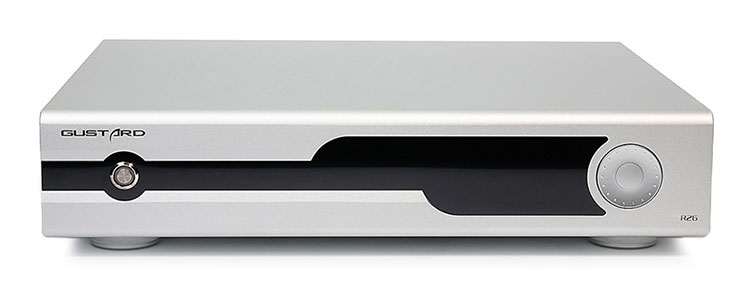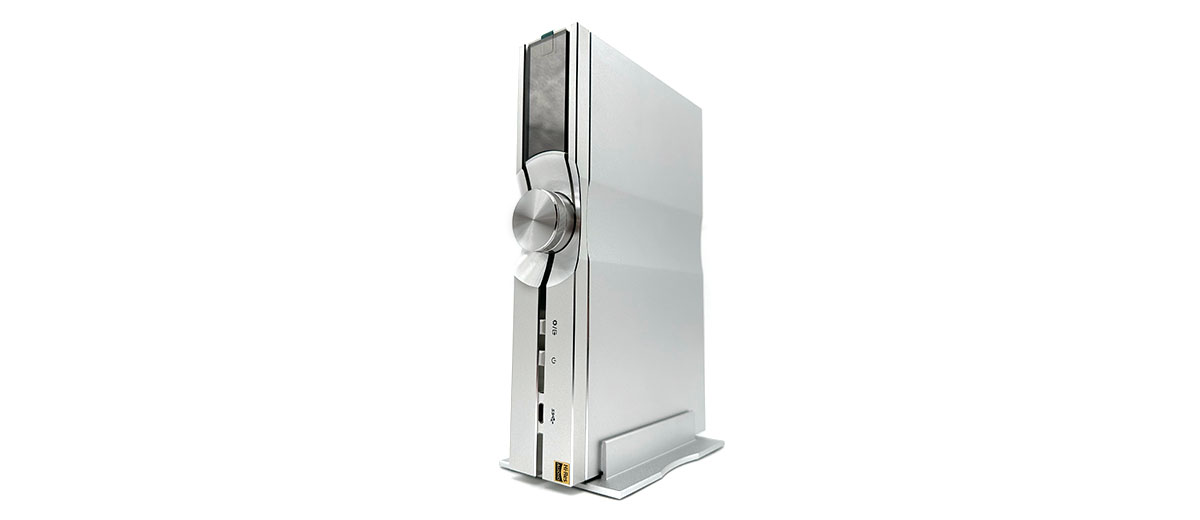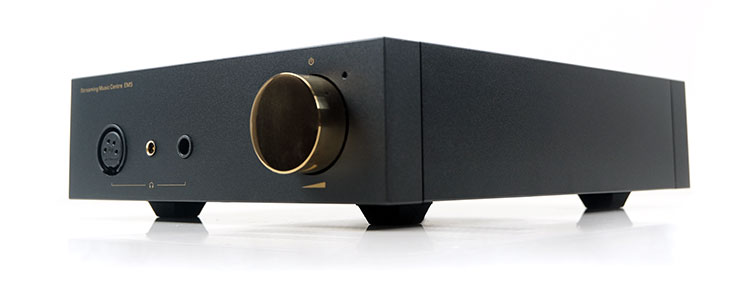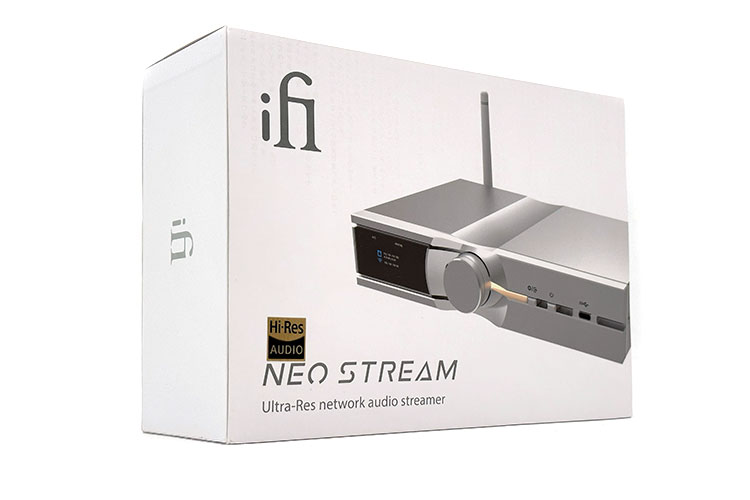Select Comparisons
Shanling EM5
Technical
Even if the fundamental purpose is the same, the long list of digital inputs on the Shanling EM5 enables users to bypass the streaming section.
And if the frontage of the EM5 isn’t giving it away, there is a full-blown 1.62W headphone amplifier featured which in a way could be why Shanling built their entry to be friendlier towards desktop listeners.
Shanling went with an AKM AK4493EQ DAC configuration for the EM5 whereas iFi isn’t sharing exactly what the Burr-Brown chip is in their NEO Stream. Still, both will handle MQA files like a champ with the only handicap on Shanling’s camp since their EM5 is only capable of up to PCM 384kHz.
The bigger size of the EM5 is partly because there is no external power supply necessary to power up the device. If the NEO Stream is beguiling for its packaged iPower X, the EM5 is just as eager to impress by assigning two different power supply classes for its digital and analog sections.
Design
Shanling isn’t reluctant to take up as much desk space as they want with their much bigger EM5. Its size is not out of the ordinary though, especially for a desktop all-in-one but the NEO Stream in comparison is looking much sleeker and diminutive.
Use the included stand, and the NEO Stream further hides its size if the vertical orientation suits your desk setup. However, the WIFI antenna in either orientation will always stick out of the rear, whereas Shanling built the receiver into the unit to not disturb its form.
While bigger and more multifaceted, I’m not a fan of the orientation of the display on the EM5. But, having the companion player app installed will remove the need to be always near the unit making its touch screen not as necessary.
Performance
Streaming through their consecutive DACs, both devices were strongly suggesting their type of flavor. The EM5 may be a lower-end offering but its sound is just as beneficial to gears with thin tonality.
What I find a bit weird however on the EM5 is that it sometimes places images higher than what would naturally be expected. It has a compact and rounded character that differs from the big and diffusive trait reflected by the NEO Stream.
Making an oval stage, the EM5 brings singers closer than the NEO Stream. Also, it runs short of breath when compared but it does have a similarly pleasing power and weight to the lower midrange.
Brighter parts of a song though are much more emphasized on the EM5. What saves it from becoming an issue is that it is not as thin as the NEO Stream while also being able to separate enough to diffuse the energy.
Overall, the NEO Stream is the one that opens up the scene much more easily, especially with its more technical texture and detail retrieval. Even if I like the sweeter guitars on the EM5, the NEO Stream breaks it even with the gusto of the low-end extension lingering longer.
EarMen Staccato
Technical
Having a comparatively barer list of IO, the Earmen Staccato doesn’t have the same strength as the NEO Stream to be a streaming hub outside of its optical and coaxial outputs.
But to counter the iPurifier tech iFi used in some of its digital connections, the Staccato has also been optimized to filter and remove unwanted resonance.
I won’t be talking about the DAC of the Staccato because it doesn’t have one. To perfect on a single proficiency, EarMen built their standalone sub-thousand-dollar streamer box for users who already have their own digital to analog converters.
The NEO Stream however goes beyond the basics by having USB 3.0 and a 5GHz WIFI antenna. A slight trade when opting for the Staccato is its older USB 2.0 interface and the exchange of the WIFI antenna for a Bluetooth receiver.
Design
Its smaller size may be misleading but the Staccato is 180 grams heavier than the NEO Stream. Every time I move the Staccato around, it does feel like I’m lifting a much bigger object than it looks.
One part of it is the denser chunk of aluminum chassis used by EarMen since the NEO Stream returns a less rigid sound when knocked on. It is said by EarMen that their ‘unity chassis’ as they call it is expected to deliver both durability and musical function.
Aside from the rock-solid chassis, however, there is little to compare with the design of the Staccato. Leaving a plainer canvas, EarMen pushed all controls in the companion app which removes any need for displays and switches in the Staccato.
Performance
Getting refreshed by the Staccato’s sonic signature, I was instantly reminded of its more transparent nature in response to the more mischievous attitude of the NEO Stream. Instruments and singers all dropped in weight and energy achieving a more neutral canvas for users to later tweak with their paired gear of choice.
There’s still oomph to thumping beats that similarly punch with definition even though it is the NEO Stream that will be more convincingly full and engaging. The Staccato in this way grants for a lean but spacious sub-bass extension that is utilized by its crisper bite for reverb.
Guitars and chimes on EarMen’s streamer have less impact but sound more refined. Forward depth is also more even on the Staccato but it has a thinner-sounding upper midrange.
Both devices have a similar presentation for violins. The Staccato however edges the NEO Stream on more crowded songs since its tighter character gives way to make images clearer much easier.
As a pure streamer, it was hard to tell but I’m getting longer top-end extension and spatial cues on the NEO Stream. The Staccato did a great job as well in this regard but it sometimes shows more smoothness where the NEO Stream dispersed a bit better.
Gustard R26
Technical
Both units have DAC and streaming functionalities. But with roles reversed, the NEO Stream is a streaming-identified enclosure while the R26 is more about the DAC. This translates to the IO capabilities of the two units being a little different.
Missing out on any digital output options, the R26 has more inputs including a standard ethernet, I2S, AES/EBU, coaxial, optical, and of course USB. But when it comes to the analog output options, both units have single-ended and balanced outputs.
In terms of decoding capability, both units can decode up to 24bit/768kHz PCM files. Equally capable of decoding MQA, the R26 rises with its surprising edge in decoding up to DSD 1024 through its USB and I2S inputs.
One significant feature differentiating the R26 from the NEO Stream is that it does its digital to analog decoding using R2R tech instead of a delta-sigma one like the Burr Brown chip featured in many iFi products including the NEO Stream.

Design
Having a larger chassis typically allows for more space for I/O in the rear to breathe which in the case of the R26 means a more traditional layout. Also, it allows the R26 to fit in a linear power supply inside the unit, leaving the R26 with one less component to lug around unlike the iPower X necessary for the NEO Stream to get up and running.
Both units employ the use of a screen but the one on the NEO Stream is much more friendly and streaming-focused showing the song’s album art to start compared to the black and white screen of the R26.
Aside from a simpler interface, the menu on the R26 is much more finicky as well since the font on the screen is very small combined with a track wheel that can be a bit too sensitive at times
As a total package though, despite the larger footprint of the R26, it ends up being more streamlined since all the components are already inside the unit.
Operating the NEO Stream with the OptiBox means aside from the external power supply of the main device, users also need to keep another 5V DC adaptor plugged in to keep the tiny box functioning.
Performance
Running both as an all-in-one, the R26 adds a touch more grain while allowing more nuance into the vocal presentation. This somehow intensifies the degree of breathiness in the vocal presentation which continues to the instrument timbre to finally come through more clearly.
The bass on the R26 sounds looser since drum hits have a decay that can be subtly longer against the NEO Stream. Moving over to the other end of the frequency spectrum, the presentation on the R26 can be comparatively rolled off, softening the leading edges of cymbal hits while giving wind instruments a bit more air but less bite.
Instrument placement within the soundstage is similar on both DACs, where the lateral presentation and placement of the instruments are similarly accurate. Nonetheless, the R26 presents a bit better ability with depth allowing the vocals to sing further away when called for.
Neck and neck at the moment, using the NEO Stream in its pure streamer form gave a clue as to what it emphasizes. Bypassing the internal streamer on the R26 and using the I2S output on the Neo Stream brings that additional focus to the images within the soundstage created originally by the R26.
The NEO Stream with each drum hit sounded more textured and nuanced without losing the deep impact behind the bass drum. The more focused presentation also allows the midrange to have a more nuanced vocal presentation.
Our Verdict
What the iFi Audio NEO Stream provides as a package can be a mouthful to enumerate but at the end of the day, the company has proved that its streaming capability is top-notch. What is more, since it also has an elegant style and a rich tonality, it becomes a device that if within budget would uplift any listening setup.
However, with all the extras included, it is the OptiBox that needs to prove its worth in being bundled exclusively with every purchase. The difference between using the fiber connection versus straight ethernet is barely perceptible in my testing so I just kept the box plugged in anyway.
Some may find that the DAC is slightly inferior to the maximum capabilities of the dedicated streamer. But unless you have access to higher-end converters, the overall performance of the NEO Stream suits it just fine.
iFi Audio NEO Stream Specifications
- Input: WIFI / Ethernet (M12 X-code 8-pin/RJ45/Optical) / USB-A and USB-C (front panel) (USB DISK, HDD, etc.)
- Formats: DSD: up to 512 / 22.6MHz / PCM: up to 768kHz / MQA: Full Decoder
- Analog Output: Balanced 4.4mm 4V RMS / UnBAL RCA 2V RMS
- Digital Output: USB-C (front panel) / USB3.0 Type-A Socket x2 (USB2.0 compatible) / S/PDIF Optical (PCM up to 192kHz, 24-bit) / S/PDIF Coaxial (PCM up to 192kHz, 24-bit) / AES/EBU (XLR – single link, PCM up to 192kHz) / I2S via HDMI
- THD+N: <0.0025% @ 0dBFS (BAL/UnBAL)
- Power Supply: DC 9V/2.0A, 12V/1.8A, 15V/1.2A* (centre pin +)
- Dimensions: 214 x 151 x 41 mm (8.4″ x 5.9″ x 1.6″)
- Net weight: 1.0 kg (2.26 Ibs)





